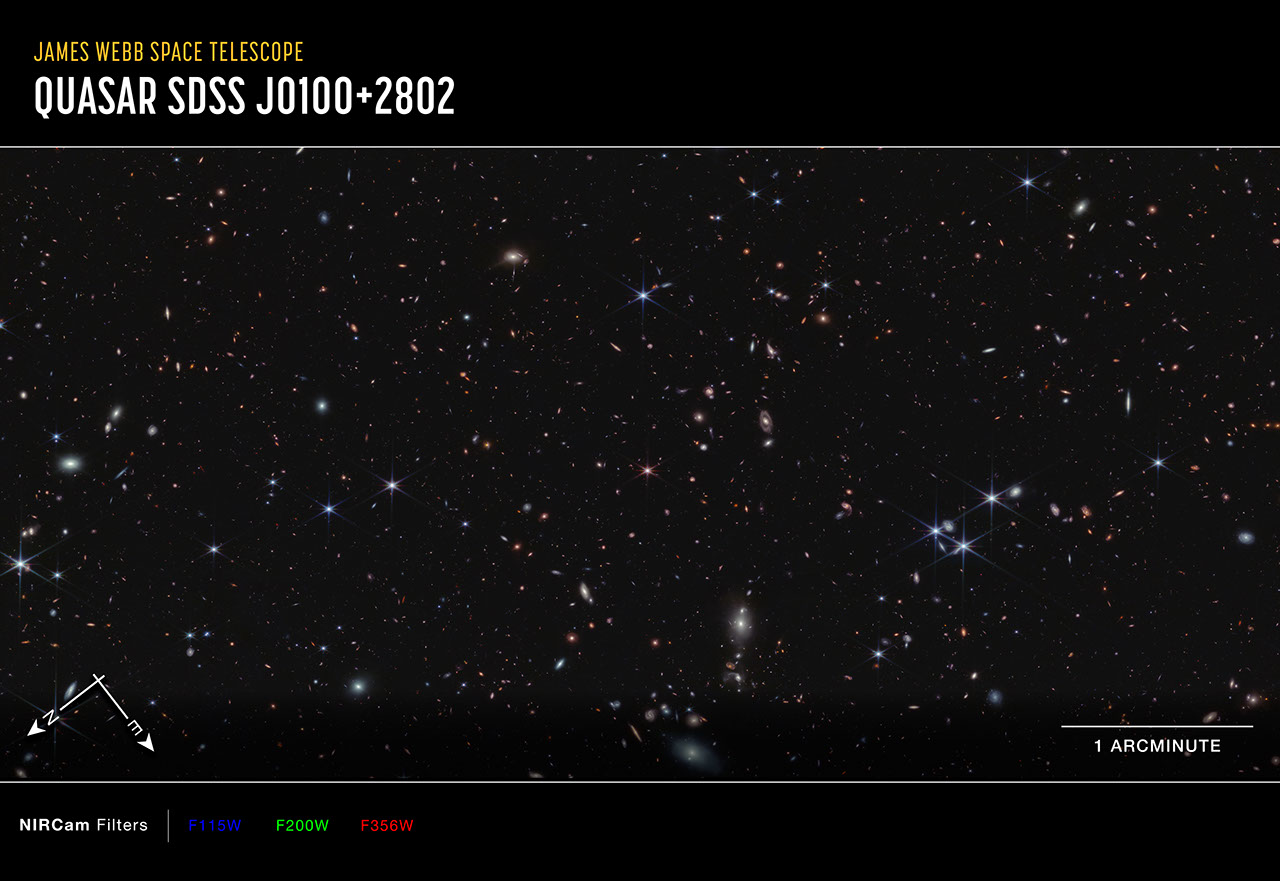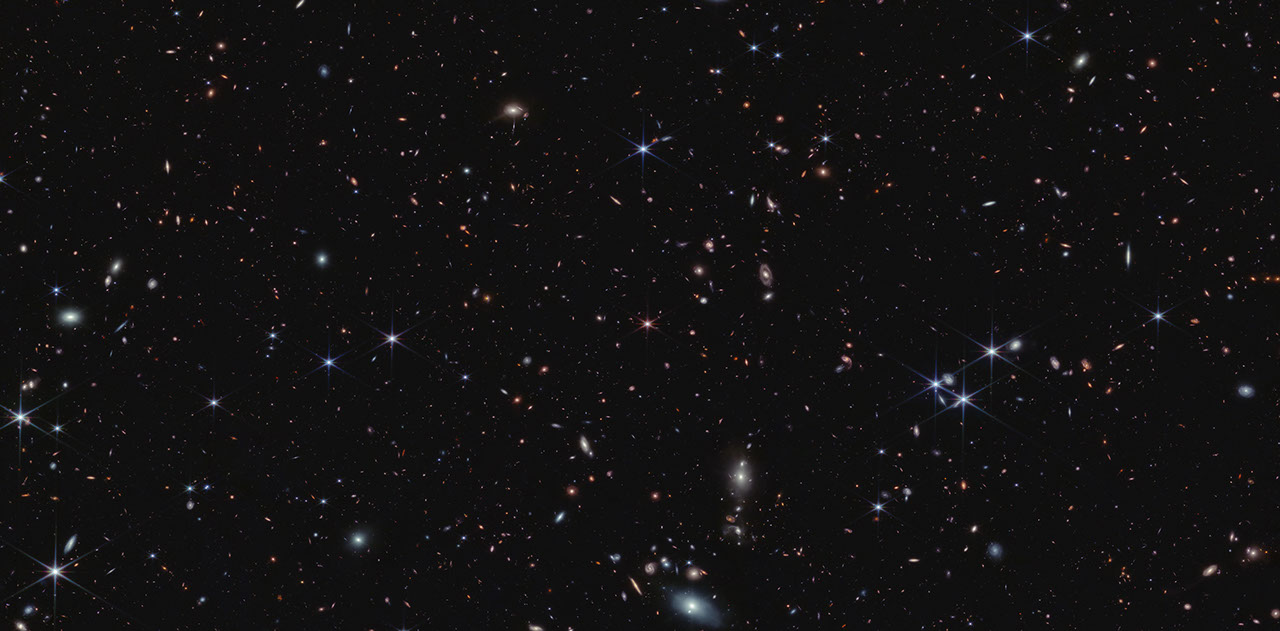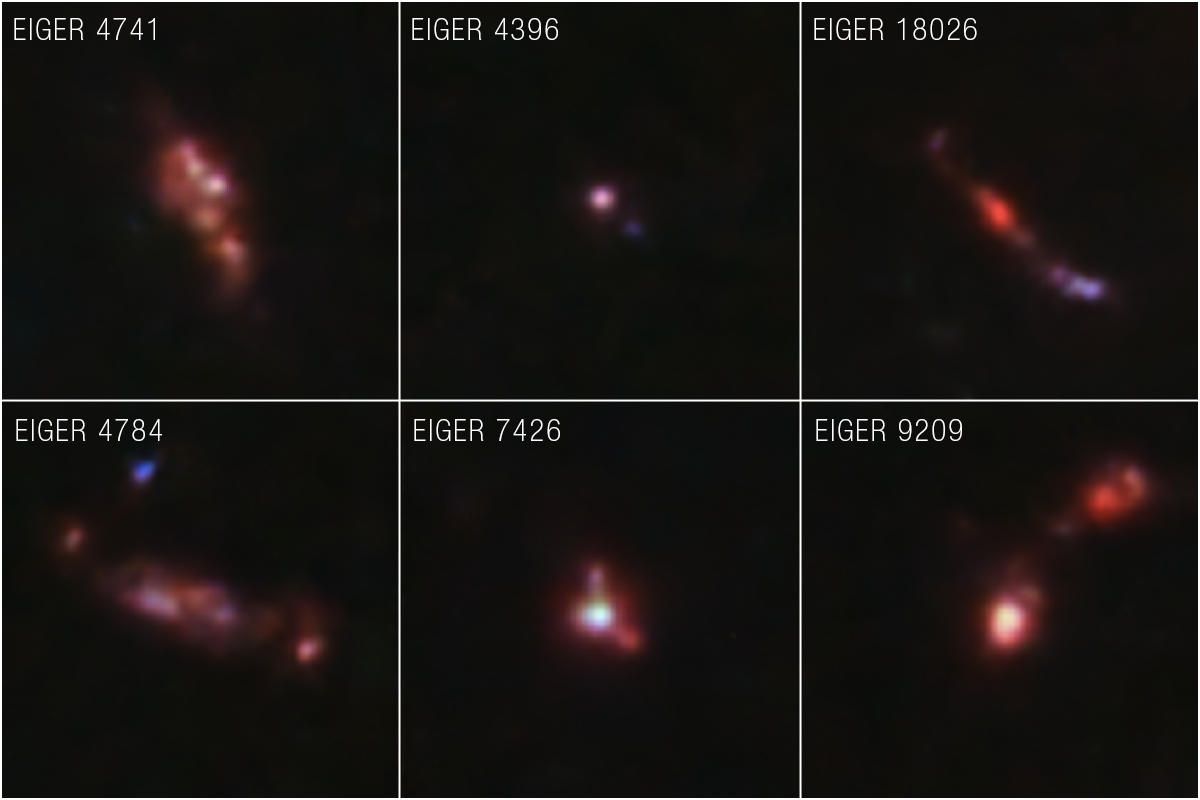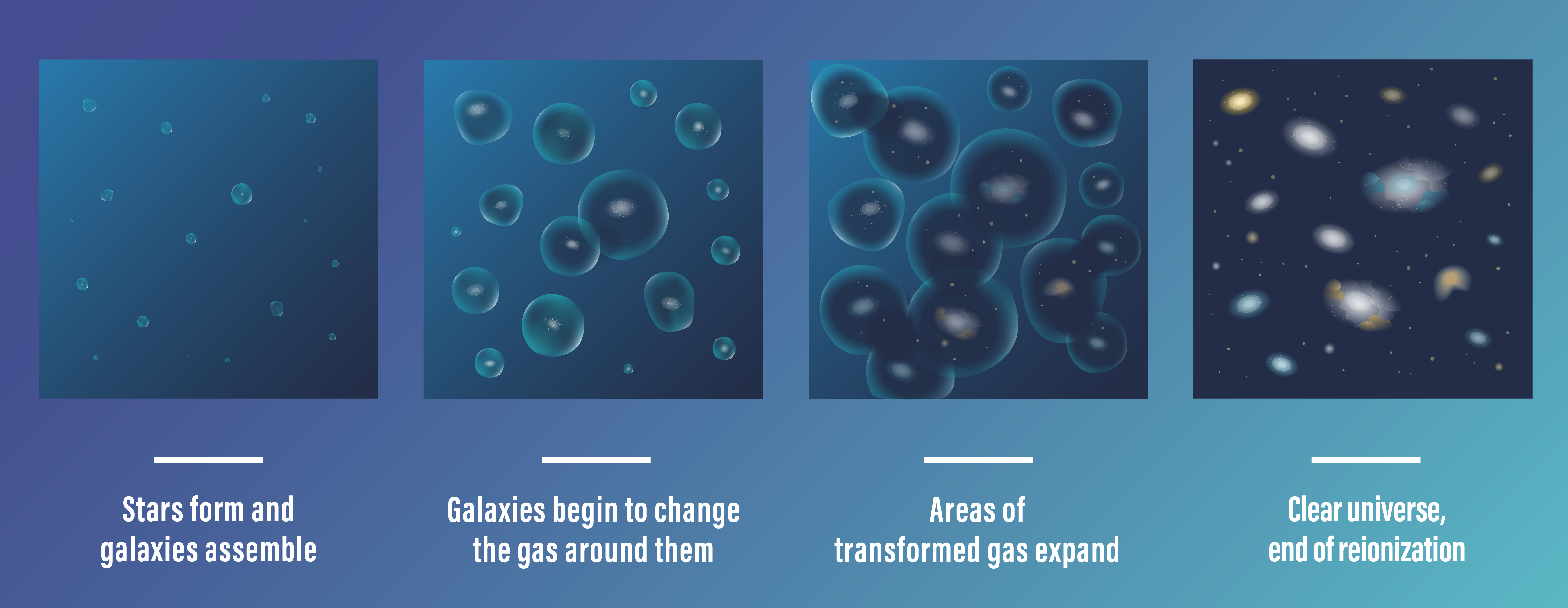1 min read
Quasar J0100+2802 (NIRCam Compass Image)

This image centered on quasar J0100+2802, captured by Webb’s NIRCam (Near-Infrared Camera), shows compass arrows, scale bar, and color key for reference.
The north and east compass arrows show the orientation of the image on the sky. Note that the relationship between north and east on the sky (as seen from below) is flipped relative to direction arrows on a map of the ground (as seen from above). The scale bar is labeled 1 arcminute.
This image shows invisible near-infrared wavelengths of light that have been translated into visible-light colors. The color key shows which NIRCam filters were used when collecting the light. The color of each filter name is the visible light color used to represent the infrared light that passes through that filter. In this image, blue, green, and red were assigned to NIRCam data at 1.15, 2, and 3.65 microns (F115W, F200W, and F365W), respectively.
About the Object
- R.A. PositionR.A. PositionRight ascension – analogous to longitude – is one component of an object's position.01:00:13.02
- Dec. PositionDec. PositionDeclination – analogous to latitude – is one component of an object's position.+28:02:25.8
- ConstellationConstellationOne of 88 recognized regions of the celestial sphere in which the object appears.Pisces
- DistanceDistanceThe physical distance from Earth to the astronomical object. Distances within our solar system are usually measured in Astronomical Units (AU). Distances between stars are usually measured in light-years. Interstellar distances can also be measured in parsecs.12.8 billion lights years to quasar SDSS J0100+2802
- DimensionsDimensionsThe physical size of the object or the apparent angle it subtends on the sky.Field is about 6.7 arcminutes across
About the Data
- Data DescriptionData DescriptionProposal: A description of the observations, their scientific justification, and the links to the data available in the science archive.
Science Team: The astronomers who planned the observations and analyzed the data. "PI" refers to the Principal Investigator.This image was created with Webb data from proposal: 1243 (S. Lilly)
- InstrumentInstrumentThe science instrument used to produce the data.NIRCam
- Exposure DatesExposure DatesThe date(s) that the telescope made its observations and the total exposure time.22 Aug 2022
- FiltersFiltersThe camera filters that were used in the science observations.F115W, F200W, F356W
- Object NameObject NameA name or catalog number that astronomers use to identify an astronomical object.Quasar SDSS J0100+2802, EIGER (Emission-line galaxies and Intergalactic Gas in the Epoch of Reionization) Survey
- Object DescriptionObject DescriptionThe type of astronomical object.Deep field survey
- Release DateJune 12, 2023
- Science ReleaseNASA’s Webb Proves Galaxies Transformed the Early Universe
- CreditImage: NASA, ESA, CSA, Simon Lilly (ETH Zurich), Daichi Kashino (Nagoya University), Jorryt Matthee (ETH Zurich), Christina Eilers (MIT), Rob Simcoe (MIT), Rongmon Bordoloi (NCSU), Ruari Mackenzie (ETH Zurich); Image Processing: Alyssa Pagan (STScI), Ruari Mackenzie (ETH Zurich)

These images are a composite of separate exposures acquired by the James Webb Space Telescope using the NIRCam instrument. Several filters were used to sample wide wavelength ranges. The color results from assigning different hues (colors) to each monochromatic (grayscale) image associated with an individual filter. In this case, the assigned colors are: Blue: F115W Green: F200W Red: F356W
Related Images & Videos

Quasar J0100+2802 (NIRCam Image)
There are more than 20,000 galaxies in this field. This James Webb Space Telescope view is found between the Pisces and Andromeda constellations. Researchers using Webb anchored their observations on quasar J0100+2802, an active supermassive black hole that acts like a beacon....

Distant Galaxy Samples Near Quasar J0100+2802 (NIRCam Image)
The James Webb Space Telescope has returned extraordinarily detailed images and spectra of galaxies that existed when the universe was only 900 million years old. “In Webb’s near-infrared image, we can see structures in every individual galaxy that the telescope detected,”...

Conditions During the Era of Reionization (Illustration)
More than 13 billion years ago, during the Era of Reionization, the universe was a very different place. The gas between galaxies was largely opaque to energetic light, making it difficult to observe young galaxies. As stars and young galaxies continued to form and evolve, they...
Share
Details
Laura Betz
NASA’s Goddard Space Flight Center
Greenbelt, Maryland
laura.e.betz@nasa.gov
NASA, ESA, CSA, Simon Lilly (ETH Zurich), Daichi Kashino (Nagoya University), Jorryt Matthee (ETH Zurich), Christina Eilers (MIT), Rob Simcoe (MIT), Rongmon Bordoloi (NCSU), Ruari Mackenzie (ETH Zurich)
Alyssa Pagan (STScI), Ruari Mackenzie (ETH Zurich)




























